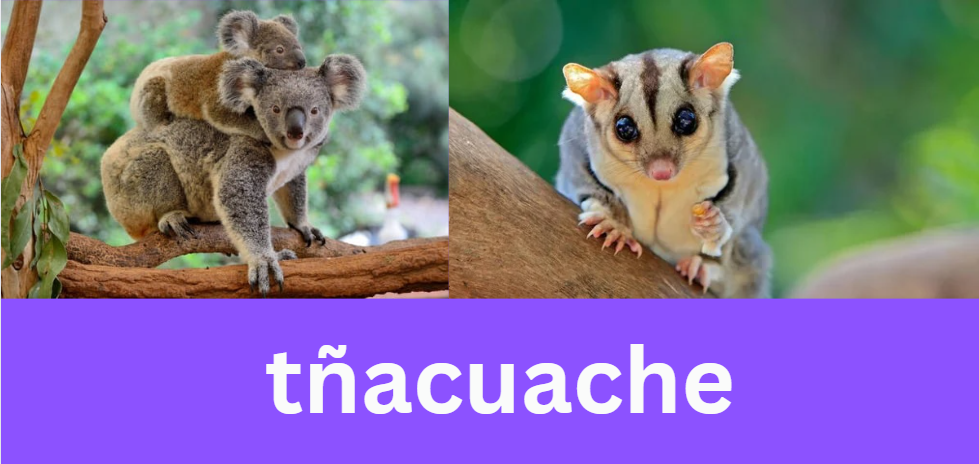Contents
- 1 Introduction to the Tñacuache
- 2 The Tñacuache: A Brief Overview
- 3 The Tñacuache in Ecology and Biodiversity
- 4 The Unique Adaptations of the Tñacuache
- 5 The Tñacuache in Human Culture and Mythology
- 6 The Tñacuache in the United States: A Closer Look
- 7 The Tñacuache’s Environmental Impact and Conservation
- 8 Frequently Asked Questions (FAQs)
- 8.1 1. What does the word “tñacuache” mean?
- 8.2 2. Are tñacuaches dangerous to humans?
- 8.3 3. Do tñacuaches carry diseases?
- 8.4 4. How can I keep tñacuaches out of my yard?
- 8.5 5. What should I do if I find a tñacuache in my home?
- 8.6 6. Why do tñacuaches have hairless tails?
- 8.7 7. Can tñacuaches be kept as pets?
- 9 Conclusion: Embracing the Tñacuache
Introduction to the Tñacuache
The tñacuache, known to English speakers as the opossum, is a fascinating and often misunderstood marsupial native to the Americas. Despite its somewhat notorious reputation in popular culture, the tñacuache plays a crucial role in ecosystems and has a unique set of characteristics that make it one of the most interesting mammals in the region.
In this comprehensive guide, we will explore everything there is to know about the tñacuache—from its biology and behavior to its cultural significance and role in the environment. Whether you’re a wildlife enthusiast, a curious reader, or someone interested in the biodiversity of North America, this article will provide you with detailed insights that go beyond the basic information available online.
The Tñacuache: A Brief Overview
What is a Tñacuache?
The term tñacuache is derived from the Nahuatl language, spoken by the indigenous people of Mexico, and is commonly used in Mexico and parts of Central America to refer to the animal known as the opossum in English. The most well-known species in North America is the Virginia opossum (Didelphis virginiana), which is the only marsupial found north of Mexico.
Physical Characteristics
Tñacuaches have a distinctive appearance, characterized by their grayish-white fur, pointed snout, and hairless prehensile tail. Adults typically weigh between 4 to 14 pounds, and their body length ranges from 13 to 20 inches, excluding the tail, which can be as long as the body itself. Their fur is coarse, and they have opposable thumbs on their hind feet, which are unique among American mammals.
Habitat and Distribution
The tñacuache is highly adaptable and can be found in a variety of habitats, including forests, grasslands, wetlands, and even urban areas. Their range extends from southern Canada through the United States and into Central America. They are particularly abundant in the southeastern United States, where they thrive in the warm, humid climate.
The Tñacuache in Ecology and Biodiversity
The Role of Tñacuaches in Ecosystems
Tñacuaches play a vital role in maintaining the balance of ecosystems. As omnivores, they have a varied diet that includes fruits, insects, small mammals, birds, and carrion. This makes them important scavengers, helping to clean up dead animals and reduce the spread of diseases. They also control populations of pests, such as insects and rodents, contributing to agricultural health.
Seed Dispersal
One lesser-known ecological role of the tñacuache is its contribution to seed dispersal. By consuming fruits and berries, tñacuaches help spread seeds across their habitats, promoting the growth of vegetation and contributing to forest regeneration. This process is particularly important in tropical and subtropical regions, where they play a role similar to that of birds and other fruit-eating animals.
Predation and Threats
While tñacuaches are effective in avoiding predators due to their nocturnal habits and ability to “play dead” (a behavior known as thanatosis), they are preyed upon by a variety of animals, including owls, foxes, coyotes, and large snakes. Humans also pose a significant threat through habitat destruction, road accidents, and intentional killing, often due to misconceptions about the animal.
The Unique Adaptations of the Tñacuache
Playing Dead: The Tñacuache’s Famous Defense Mechanism
One of the most remarkable adaptations of the tñacuache is its ability to play dead when threatened. This involuntary response, known as thanatosis, involves the animal collapsing, lying still, and exuding a foul-smelling liquid from its anal glands to deter predators. This behavior can last from a few minutes to several hours, depending on the level of threat.
Immunity to Venom
Another fascinating adaptation of the tñacuache is its partial immunity to snake venom, particularly from pit vipers like rattlesnakes. This immunity allows them to prey on venomous snakes, a rare trait among mammals. Scientists are studying the tñacuache’s blood serum for potential applications in developing antivenoms.
Marsupial Reproduction
As a marsupial, the tñacuache gives birth to underdeveloped young, which then crawl into the mother’s pouch to continue developing. This pouch, located on the abdomen, provides a safe and nurturing environment where the young attach to a nipple and stay until they are mature enough to leave the pouch. This reproductive strategy is unique to marsupials and contrasts with the placental development seen in most mammals.
The Tñacuache in Human Culture and Mythology
Cultural Significance in Indigenous Traditions
The tñacuache holds a special place in the mythology and folklore of many indigenous cultures in the Americas. In some Mexican traditions, the tñacuache is seen as a clever and resourceful animal, often playing the role of a trickster in stories. One popular legend explains how the tñacuache brought fire to humans by carrying it in its tail, which is why its tail is hairless today.
The Tñacuache in Modern Popular Culture
In modern times, the tñacuache has been depicted in various forms of media, often portrayed as a comical or mischievous character. Despite these humorous depictions, the tñacuache is frequently misunderstood and associated with negative stereotypes, such as being a “dirty” or “diseased” animal. This reputation is largely unfounded, as tñacuaches are clean animals that groom themselves regularly and play an important role in controlling pests.
The Tñacuache as a Symbol of Resilience
The tñacuache’s ability to survive and thrive in diverse environments, including urban areas, has made it a symbol of resilience and adaptability. In a rapidly changing world where many species struggle to cope with human expansion, the tñacuache’s success story is a testament to the importance of adaptability in the face of adversity.
The Tñacuache in the United States: A Closer Look
Urban Tñacuaches: Thriving in the City
In the United States, tñacuaches have become increasingly common in urban and suburban areas. Their adaptability allows them to survive in cities, where they find food in garbage, pet food left outside, and gardens. However, this proximity to humans often leads to conflicts, as tñacuaches are sometimes seen as pests.
Misconceptions and Facts
There are several misconceptions about tñacuaches that contribute to their negative image. One common myth is that they are rabid because they are often seen staggering and drooling. In reality, tñacuaches have a lower body temperature than most mammals, which makes it difficult for the rabies virus to survive in their bodies. The staggering and drooling are usually symptoms of being struck by a car or other physical trauma.
Coexisting with Tñacuaches
Despite the challenges, it is possible to coexist peacefully with tñacuaches. Simple measures, such as securing garbage cans, not leaving pet food outside, and sealing entry points to homes, can help prevent unwanted encounters. Additionally, understanding the beneficial role that tñacuaches play in controlling pests can lead to greater tolerance and appreciation for these animals.
The Tñacuache’s Environmental Impact and Conservation
Environmental Benefits of Tñacuaches
The tñacuache’s role in the ecosystem goes beyond pest control and seed dispersal. By preying on ticks, tñacuaches help reduce the spread of Lyme disease and other tick-borne illnesses. Studies have shown that a single tñacuache can consume thousands of ticks in a season, making them an important ally in public health.
Conservation Status
While the tñacuache is not currently considered endangered, its populations are threatened by habitat loss, road mortality, and human persecution. Conservation efforts are focused on educating the public about the benefits of tñacuaches and promoting coexistence. In some areas, wildlife corridors and safe road crossings are being developed to reduce road mortality.
The Future of the Tñacuache
The future of the tñacuache depends on our ability to adapt to living alongside wildlife in increasingly urbanized environments. As cities expand and natural habitats shrink, the tñacuache’s adaptability will be tested. However, with increased awareness and conservation efforts, there is hope that tñacuaches will continue to thrive.
Frequently Asked Questions (FAQs)
1. What does the word “tñacuache” mean?
The word “tñacuache” comes from the Nahuatl language and is commonly used in Mexico and Central America to refer to the animal known in English as the opossum. It is a term that reflects the cultural significance of the animal in these regions.
2. Are tñacuaches dangerous to humans?
Tñacuaches are generally not dangerous to humans. They are shy, non-aggressive animals that prefer to avoid confrontation. If threatened, they may play dead or hiss, but they rarely bite unless provoked. It is important to handle them with care if encountered.
3. Do tñacuaches carry diseases?
Tñacuaches are often mistakenly believed to be carriers of rabies and other diseases. However, they have a lower body temperature than most mammals, which makes them less likely to carry rabies. They do, however, have the potential to carry parasites like fleas and ticks, so it is best to avoid handling wild tñacuaches.
4. How can I keep tñacuaches out of my yard?
To keep tñacuaches out of your yard, secure trash cans with tight-fitting lids, remove any food sources (such as pet food or fallen fruit), and seal entry points to attics or basements. Additionally, consider installing motion-activated lights or sprinklers to deter nocturnal visitors.
5. What should I do if I find a tñacuache in my home?
If you find a tñacuache in your home, the best course of action is to gently encourage it to leave by opening doors or windows leading outside. Avoid direct contact, as tñacuaches may become defensive if cornered. If the animal does not leave on its own, contact a local wildlife removal service for assistance.
6. Why do tñacuaches have hairless tails?
The tñacuache’s hairless tail is an adaptation that allows it to grip and wrap around branches, aiding in climbing and balancing. In folklore, the lack of hair is often explained through myths, such as the story of the tñacuache bringing fire to humans, which burned the fur off its tail.
7. Can tñacuaches be kept as pets?
While it is legal to keep tñacuaches as pets in some areas, it is generally not recommended. Tñacuaches are wild animals with specific dietary and environmental needs that can be difficult to meet in captivity. Additionally, they may not adapt well to domestic life and can become stressed or aggressive.
Conclusion: Embracing the Tñacuache
The tñacuache is a remarkable creature that has earned its place in the ecosystems of the Americas. From its unique adaptations to its important ecological roles, the tñacuache is a testament to the diversity and resilience of wildlife. By understanding and appreciating this often-misunderstood marsupial, we can foster a greater sense of coexistence and conservation.
As urbanization continues to encroach on natural habitats, the tñacuache’s adaptability will be increasingly important. However, it is up to us to ensure that this adaptable survivor continues to thrive. By spreading awareness and taking steps to coexist peacefully with tñacuaches, we can help secure a future where these fascinating animals remain an integral part of our world.



